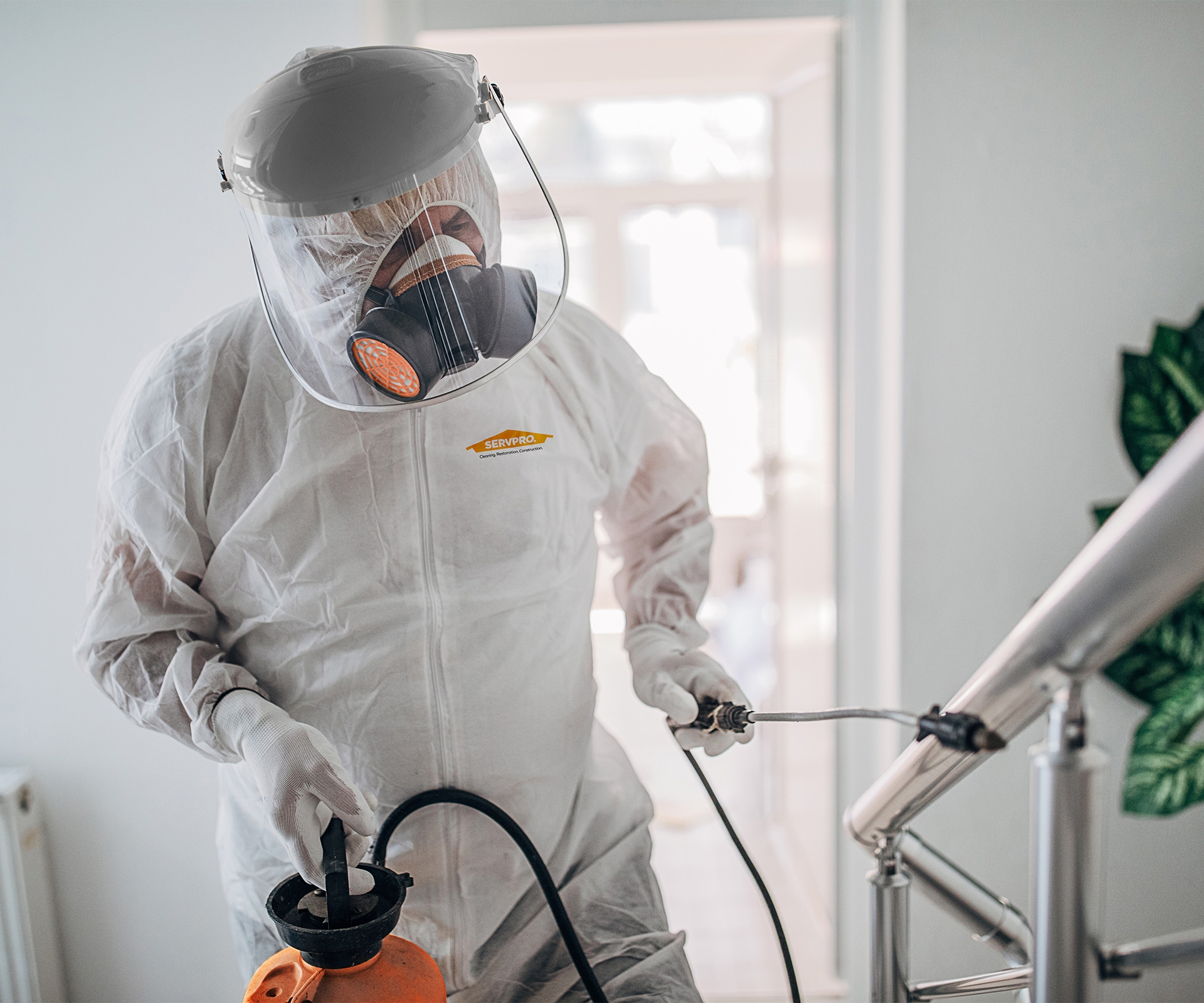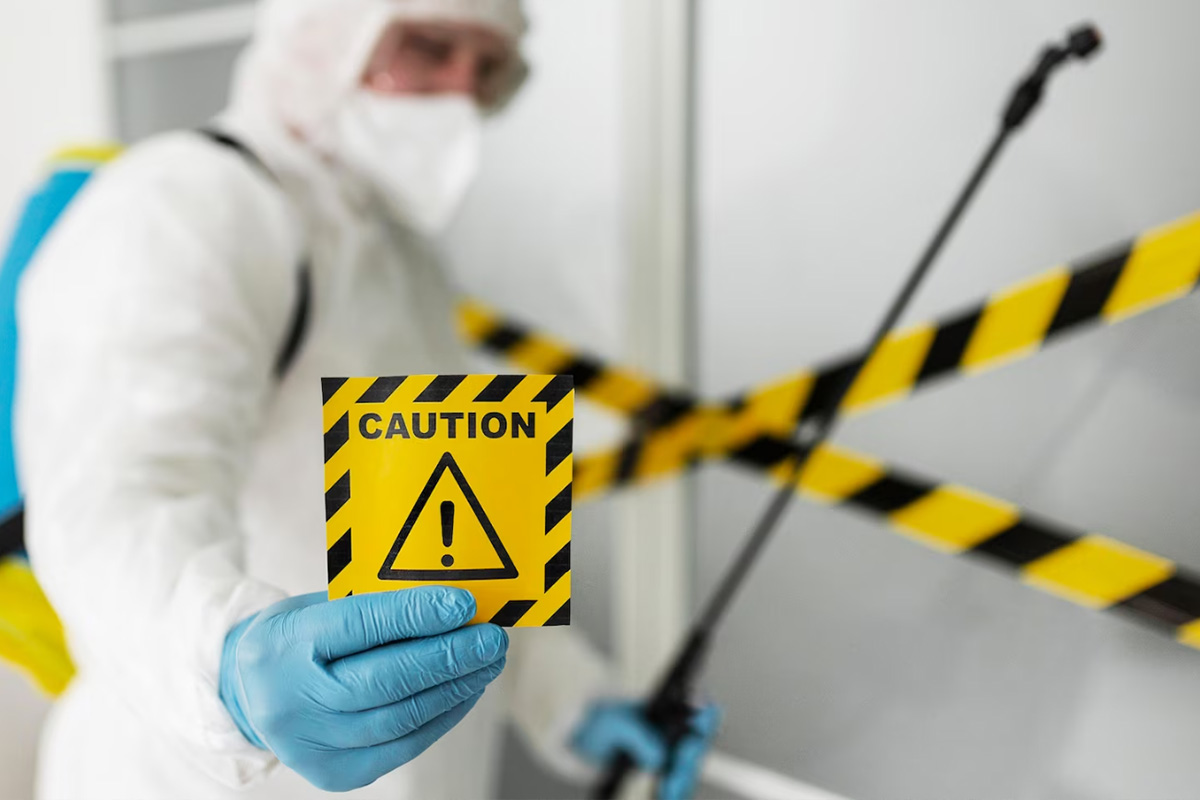Flood Damage Restoration: Quick and Effective Recuperation for Your Home
Flood Damage Restoration: Quick and Effective Recuperation for Your Home
Blog Article
Specialist Biohazard Cleaning and Decontamination for Blood, Bodily Fluids, and Hazardous Materials
The prospective health dangers associated with exposure to biohazards emphasize the vital requirement for meticulous handling and detailed clean-up. As we navigate the complex landscape of biohazard cleaning, recognizing the subtleties of laws, compliance, and the customized tools at play ends up being essential in guaranteeing a safe and extensive decontamination process.
Health And Wellness Threats of Biohazard Direct Exposure
Exposure to biohazards poses considerable health threats that can cause severe consequences for people and neighborhoods alike. Biohazards encompass a large range of biological materials, consisting of blood, bodily fluids, mold, germs, viruses, and other potentially transmittable products. When individuals enter into contact with these biohazards, whether through crashes, incorrect handling, or environmental direct exposure, they deal with the risk of having significant health problems or diseases.
One of the primary health risks related to biohazard direct exposure is the transmission of infectious diseases. Bloodborne pathogens such as HIV, hepatitis B and C, and various bacteria can be existing in biohazardous materials, presenting a straight risk to human health and wellness. Breathing in air-borne biohazards like mold spores or entering contact with infected surface areas can likewise lead to breathing problems, allergic reactions, and various other unfavorable health and wellness impacts.
Furthermore, biohazard exposure can have lasting health and wellness implications, with some diseases manifesting years after the preliminary call (Blood Cleanup). Consequently, it is essential to focus on correct biohazard cleansing and purification to reduce these health dangers and guarantee the security of areas and individuals

Specialized Educating for Biohazard Clean-up
When it involves managing biohazard cleanup effectively and safely, specialized training plays a basic duty in making certain proper decontamination procedures are followed. Biohazard cleaning needs specific knowledge and skills to properly alleviate dangers related to bloodborne pathogens, bodily fluids, and harmful products. Specialists learnt biohazard cleanup undertake strenuous instruction on how to securely deal with, get rid of, and deal with biohazardous materials to avoid contamination and exposure.
Specialized training for biohazard clean-up covers a series of necessary subjects, including proper individual protective devices (PPE) usage, bloodborne virus understanding, decontamination strategies, and contaminated materials disposal protocols. Individuals learnt biohazard cleaning are furnished with the needed experience to analyze contamination degrees, identify possible risks, and apply suitable cleaning treatments in conformity with regulatory criteria.
Constant training and education are critical in the field of biohazard clean-up to stay updated on the current purification technologies, safety and security methods, and regulations. By buying specialized training, biohazard cleaning specialists can effectively react to emergency cleaning situations and safeguard both public wellness and the environment.
Value of Appropriate Decontamination Techniques
Utilizing proper decontamination methods is crucial in biohazard clean-up to properly eliminate hazardous materials and reduce wellness dangers. Reliable purification not just ensures the removal of visible traces of blood, bodily fluids, and various other biohazards yet additionally targets invisible virus that may pose significant health and wellness threats otherwise appropriately gotten rid of. Learn More Here By following rigorous decontamination protocols, educated professionals can significantly lower the danger of exposure to hazardous bacteria, infections, and germs that might bring about infections or illness.
Appropriate decontamination methods include using specific equipment and disinfectants that are specifically created to reduce the effects of biohazards successfully. Complete cleansing and sanitation of infected areas are necessary to stop the spread of pathogens and make certain a secure environment for residents. In addition, the correct disposal of biohazardous waste complying with decontamination treatments is crucial in protecting against contamination of other surface areas or people.

Tools and Tools for Safe Cleaning
When dealing with blood, bodily liquids, or hazardous materials, biohazard cleansing specialists rely on specialized gear to reduce exposure threats and extensively sanitize the affected area. In addition, biohazard cleaning sets containing disinfectants, absorbing materials, and biohazard bags are utilized to safely consist of and get rid of of contaminated items.
Advanced cleansing devices like hospital-grade anti-bacterials, HEPA-filtered vacuum cleaners, and fogging makers are used to disinfect surfaces and remove biohazards effectively. Specialized tools such as sharps containers and biohazard waste disposal bins are made use of to safely take care of sharp things and biohazardous waste materials. By using the best tools and devices, biohazard cleaning professionals can guarantee a detailed cleaning procedure that prioritizes safety and security and minimizes wellness dangers for both employees and occupants of the affected room.
Laws and Compliance in Biohazard Cleansing
Appropriate adherence to guidelines and compliance criteria is critical in biohazard cleaning to make sure the safety and security of both employees and the atmosphere. Federal government companies such as OSHA (Occupational Safety And Security and Health Management) and the EPA (Environmental Defense Agency) have established details guidelines for biohazard cleaning procedures to minimize health and wellness threats and ecological contamination. These policies cover a visit this website variety of facets consisting of the handling, transportation, and disposal of biohazardous products, in addition to the required training and safety tools needed for personnel associated with the cleanup process.
Biohazard cleaning firms should stay current with these regulations to ensure that their procedures satisfy the required safety criteria. Failing to adhere to these laws can cause serious consequences, consisting of penalties, lawful activity, and endangering the health of individuals and the environment. By complying with rigid laws and compliance actions, biohazard cleaning business can successfully reduce threats and make certain a thorough and secure cleanup process for all parties included.
Conclusion
In verdict, biohazard cleansing and decontamination need specialized training, appropriate strategies, and adherence to regulations. Direct exposure to blood, physical liquids, and hazardous materials postures substantial health and wellness risks, making it vital to use the appropriate equipment and tools for safe cleanup. By following stringent procedures and standards, specialists can efficiently mitigate the risks linked with biohazard exposure and ensure the security of both themselves and others.
As we browse the intricate landscape of biohazard cleaning, recognizing the nuances of laws, conformity, and the specialized devices at play ends up being vital in ensuring a safe and thorough purification procedure. (Blood Cleanup)
When it comes to managing biohazard cleanup effectively and safely, specialized training plays a fundamental function in ensuring proper purification treatments are adhered to.Making use of appropriate decontamination techniques is crucial in biohazard clean-up to successfully decrease and remove dangerous products wellness threats. Furthermore, biohazard cleansing packages including disinfectants, absorptive products, and biohazard bags are used to safely include and dispose of polluted products.
Federal government agencies such as OSHA (Occupational Safety And Security and Health And Wellness Administration) and the EPA (Environmental Defense Company) have actually developed details guidelines for biohazard clean-up procedures to decrease wellness risks and i was reading this ecological contamination.
Report this page